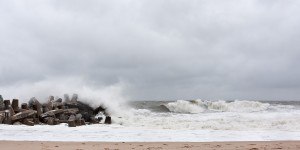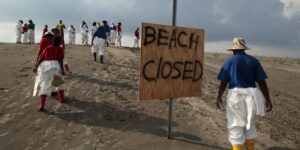As the remnants of Hurricane Odile dissipated over the southwestern U.S. Friday, catastrophe modeling firm AIR Worldwide offered a report on the storm’s track and damage.
“Odile made landfall near Cabo San Lucas, Mexico, on Sunday, September 14, at 9:45 PM (local time) as a Category 3 hurricane with maximum sustained winds of 125 mph according to the National Hurricane Center,” said Dr. Tim Doggett, assistant vice president and senior principal scientist at AIR Worldwide. “From there, Odile moved directly up the center of Baja California, bringing strong winds and heavy rain. The storm weakened as it moved northward over land; however, the weakening slowed as it curved towards the northeast and moved over the Gulf of California. Rainfall totals along the track were generally estimated in the range of 6-12 inches, with some locally heavier amounts likely in some areas.”
“At around 11 AM Wednesday, the storm made its second and final landfall as a marginal tropical storm in Sonora, Mexico, located in the northwestern region of Mexico’s mainland. From there, the storm continued into the United States weakening rapidly but producing heavy rainfall in the extreme southern regions of Arizona, southern New Mexico, and western and central Texas, ” Dr. Doggett said. “Damage in Mexico’s Baja Peninsula was widespread and severe. Reports of the heaviest damage have been from Cabo San Lucas, Mexico, with significant losses reported at the airport and several resorts. The hurricane collapsed hotels, flattened homes, and left shattered glass, debris, smashed cars, and fallen trees and power lines along flooded streets.”
The Cabo San Lucas, La Paz, San Jose del Cabo, and Loreto airports were closed Monday although commercial and military planes flew foreign tourists out of the area. A terminal roof at Los Cabos was detached and the ceiling partially collapsed. At La Paz airport, damage was limited to terminal interiors and operations are returning to normal.
Power was out for about 90 percent of Baja’s population as the storm damaged power generation facilities and blew over transmission lines.
According to AIR, insured residential buildings in the region are predominantly of masonry and concrete construction, but it is estimated that each year up to 50 percent of new homes are constructed without a building permit. Homes not built to any wind design standard are likely to see damage beyond that to roofing shingles or cladding, with significant structural damage possible.
The commercial building stock in Mexico is heterogeneous, varying from poorly constructed low-rise masonry structures to well-maintained steel buildings. Well-constructed buildings are not likely to see significant damage, although damage to roof coverings and cladding may occur where they were poorly installed or have seen little maintenance over time. At Category 2 or 3 wind speeds, unprotected building openings (i.e., windows or sliding doors) may be at significant risk of debris impact. Damage to windows or doors of both residential and commercial structures not only allows for wind damage to further increase, but it also allows for rain water infiltration, which can damage insured contents. Flash flooding in these areas will cause further damage.
Dr. Doggett concluded, “After tracking into the southwestern U.S., a considerably weakened Odile continued to produced gusty winds and heavy rain across a wide region spanning from the southern areas of Arizona and New Mexico into western and central Texas. Arizona was largely spared as the storm headed for central Texas, into a region that is currently being affected by flooding from other storm systems.”
By early Friday morning,,3.11 inches were reported in El Paso, Texas, with 2.68 inches of rain at El Paso International Airport, while 1.17 inches were reported at Lubbock International Airport. Higher amount were reported in other areas of Texas including 5.63 inches in Fluvanna, 4.31 inches in Plainview, and 3.86 inches in Gail. Heavy rain is reported in southern New Mexico, with 4.13 inches at Mogollon, 3.63 inches in Glenwood, and 3.5 inches at Chaparral. In Arizona, 3.78 inches are reported at Ephraim Wash and 3.3 inches are reported at Douglas with 3.05 inches at Bisbee-Douglas International Airport, with 3.01 inches at Nogales International Airport.
Source: AIR Worldwide





















 That Insurance Talent Crisis? It’s a Global Knowledge Opportunity
That Insurance Talent Crisis? It’s a Global Knowledge Opportunity  USAA to Lay Off 220 Employees
USAA to Lay Off 220 Employees  Cat Losses, Auto and HO Price Hikes Continue at Allstate
Cat Losses, Auto and HO Price Hikes Continue at Allstate  Study: U.S. Companies Facing Class Actions at Highest Level in 13 Years
Study: U.S. Companies Facing Class Actions at Highest Level in 13 Years 

